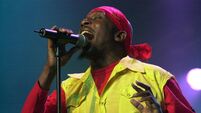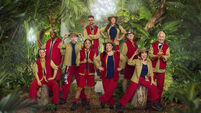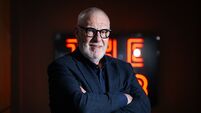In The Frame: Triskel artists explore Maritime views of Cork and Brittany
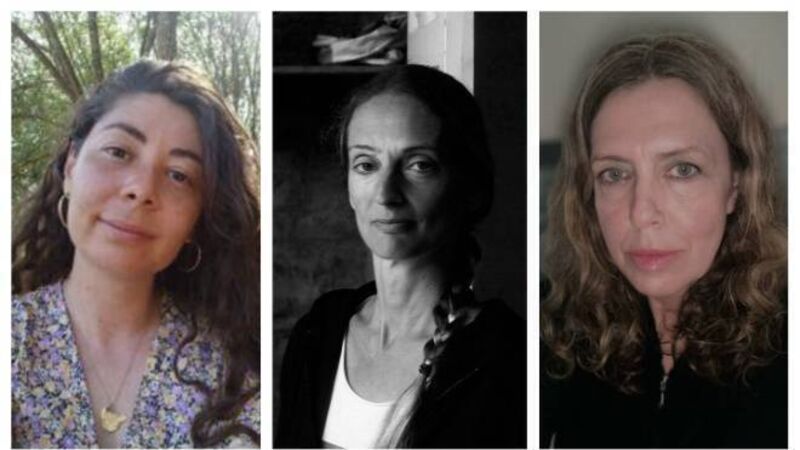
Some of the artists exhibiting work at the Triskel Arts Centre's Maritime, L-R: Laura Colomer; Ida Mitrani; Rebecca Bradley
Maritime, the new exhibition at Triskel Sample Project Space on Tobin Street, Cork, is a celebration of the rugged coastlines of Brittany and Co Cork. It features the work of four artists, Caroline Boyfield, who lives in Finistère; Laure Colomer, from Morlaix; Ida Mitrani, who is based in Ardgroom on the Beara peninsula; and Rebecca Bradley, who is settled in Fermoy.
Boyfield, who initiated the project, moved to Brittany from the UK in 2018. “My father is Scottish English, but my mother is Breton,” she explains. “They’ve lived in Brittany for ages. I decided to leave England after Brexit, having lived there for forty years. I’ve never regretted it; Brittany is very rich in culture, and there are plenty of artists around.”
The idea of organising an artists’ exchange came in 2022, after Boyfield had stayed with a friend in West Cork. “Later, when she came to visit me in Brittany, we were talking about how the two places have so much in common. I joined Sample Studios in Cork at the beginning of 2023, and put a call-out for this project. I hoped to get some kind of funding for it, and eventually Brittany Ferries agreed to sponsor the travel costs.
“I was in the process of converting my barn at Finistère, so I was able to offer two studios for Irish artists. Six artists from Sample responded. I chose Ida and Rebecca because their work appealed to me, and because they really responded to the maritime theme. Ida and Rebecca came over in April and stayed at my home for two weeks, and then Laure and I came here for a fortnight in May. We worked at Sirius Arts Centre in Cobh for a week, and then at Uillinn in Skibbereen.”
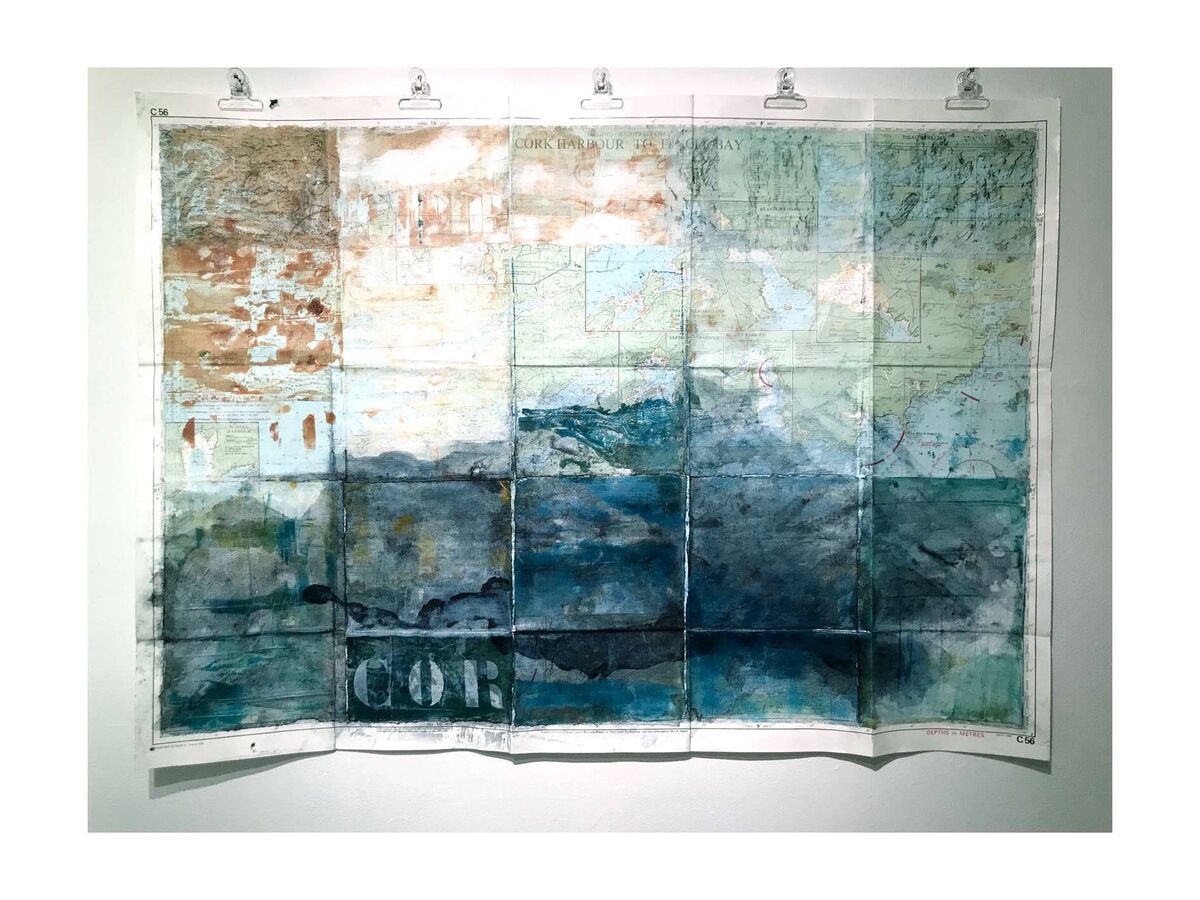
Boyfield’s own work in the show is inspired by her love of sailing. “I tried different approaches, but I settled on using maritime maps as a support for the work. I’ve done printmaking on rice paper and collaged that onto the paper. Then I’ve added indigo pigments and walnut ink, and painted on top. I’ve used the maps as physical objects to represent maritime travel, and as a response to being in the physical space of the sea. A boat is a very peculiar space to be in; you feel enclosed and safe, but at the same time you’re out in the elements.” Colomer’s work is sculptural, and is inspired by the Breton myth of a woman who lives in a cave.
“She starts off young,” says Boyfield, “and becomes old in a cycle of 28 days. This is basically a lunar cycle, which obviously affects the tides and so on, so it's very much a sea myth. Over those 28 days, the woman grows walrus tusks, and she sheds them at the end of the cycle. She also makes a gift to any woman who visits her in the cave. It's almost like a gift of wisdom; a never-ending spool of wool. Laure made the tusks out of stoneware ceramic in the studios at Uillinn. Then they were carefully wrapped up and taken back to be fired in Brittany.”
Mitrani grew up in Lille, in northern France. She moved to Ireland in 1997, and has lived in Ardgroom for many years. Her work is often inspired by the marine debris she collects on the shores of the Beara peninsula. “One of my inspirations is an early 20th century German writer named Alfred Doblin, who wrote a book about plants taking over,” she says. “From there I’ve also looked at social ecology, and how human behaviour is reflected in nature.” Mitrani usually photographs the debris and manipulates the images on Photoshop to create futuristic plants, which she then reproduces in her drawings.
In Brittany, she was surprised by the absence of debris on the shore. “I walked and walked, but I couldn’t find any plastics or anything. There are a lot of big containers that people throw their rubbish into, so I worked with some of the material I found in those.”
Mitrani’s drawings in the Marine exhibition are almost topographic in their detail. “They can be seen in different ways, but what I’m really doing is deconstructing and re-assembling. I used to do a lot of botanical art, and that's very important in my practice because it combines art and science. I don’t do much painting, I mainly draw. I find it more organic, touching the paper and working with a graphite pencil and graphite powder. I'm very careful with colour, sometimes I would use maybe a splash of watercolour, but that’s all.”
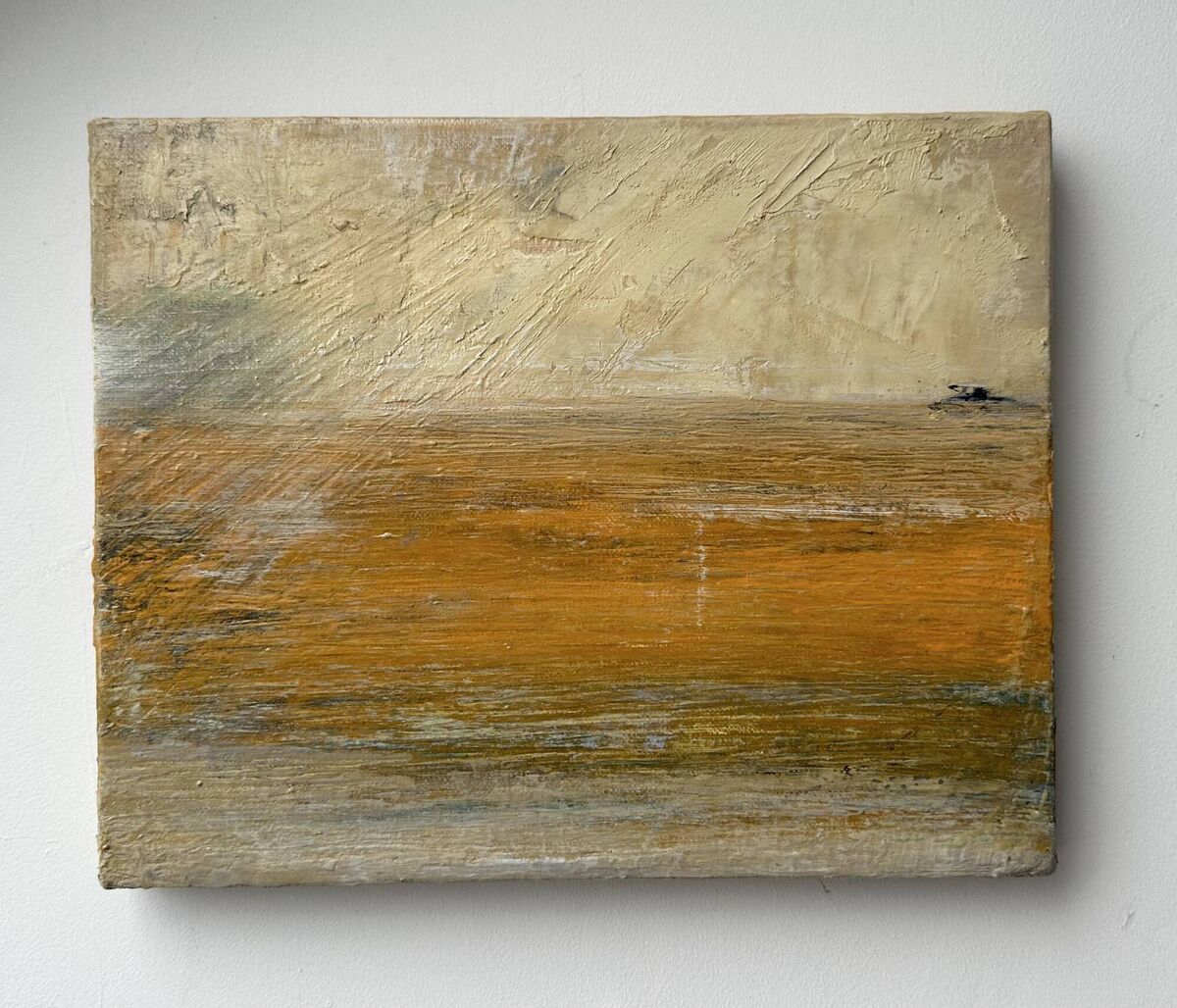
Bradley has two paintings in the show. “The smaller yellow piece I painted in anticipation of the journey to Finistère. It was almost like this projection of what the residency was going to be like, the Breton landscape with its beautiful light. Working in a small format can be challenging; you're trying to make a very compacted kind of composition.”
In Brittany, Bradley worked in water-based paints on small pieces of paper. “I often work like that if I’m on a residency,” she says. “It’s like note-taking. I try and respond very quickly to what I see, and then, when I get home, I work on more permanent grounds, like canvas or board.”
Her second painting is largely inspired by a walk she took with Boyfield one night. “There was really moody weather, with very dark skies, and a great sense of being surrounded by the sea. When I got home, I was thinking about that occasion, and the painting became about being out on the ocean, looking in on the land with the moon coming down through the darkness.”
Sample Studios’ partnership with Triskel Arts Centre was only launched in March this year, but it has already resulted in a number of residencies and exhibitions. “They have a truly international reach,” says Boyfield. “I can’t praise them enough for their initiative.”
She hopes the Brittany/Cork artists’ exchange will be the first of many. “I just wanted to see if a project like this would have mileage,” she says. “And now, out of the four of us working together, we’ve already got the makings of a small collective."
- Maritime runs at Triskel Arts Centre, Cork until September 2 Further information: triskelartscentre.ie


